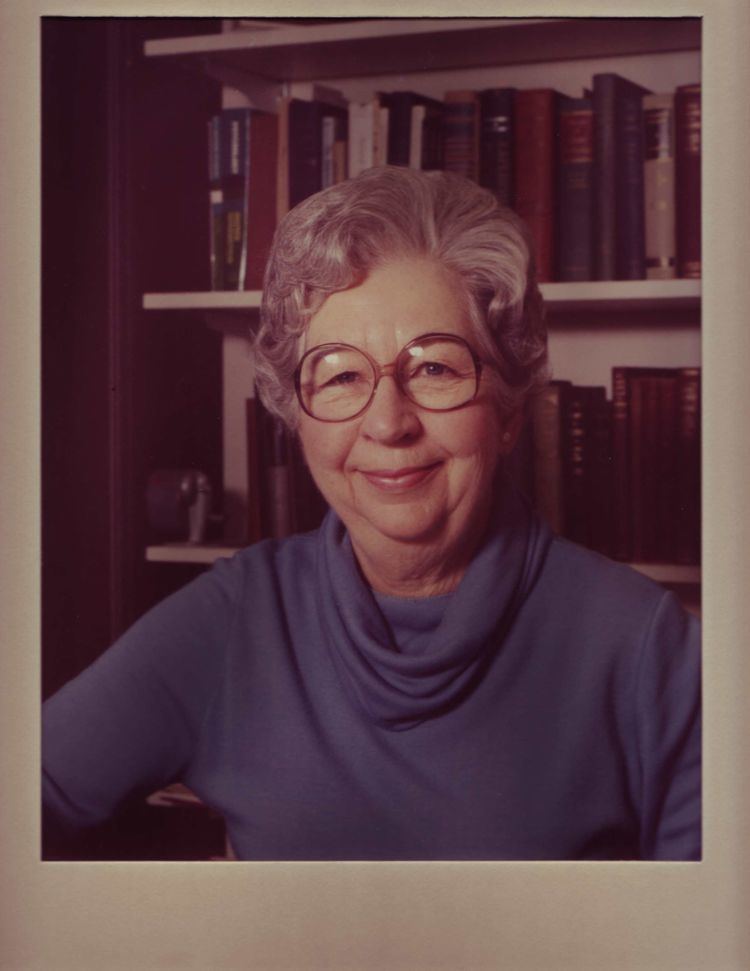Role Psychologist Doctoral advisor Clark Hull | Fields Psychology Name Eleanor Gibson | |
 | ||
Born December 7, 1910Peoria, Illinois ( 1910-12-07 ) Known for Visual Cliff, Differentiation and Enrichment of Embedded Structures Awards Guggenheim Fellowship for Social Sciences, US & Canada Books The Psychology of Reading, An Ecological Approach, An Odyssey in Learning, Perceiving the Affordances, Principles of Perceptu Similar People James J Gibson, Clark L Hull, Kurt Koffka | ||
Eleanor Jack Gibson (7 December 1910 – 30 December 2002) was an American psychologist who focused on reading development and perceptual learning in infants and toddlers. In the 1960s and 1970s Gibson, with her husband James J. Gibson, created the Gibsonian ecological theory of development which emphasized how important perception was because it allows humans to adapt to their environments. Perhaps her most well-known contribution to psychology was the "visual cliff", which studied depth perception and visual or motor impairments in both human and animal species. This led to a new understanding of perceptual development in infants. The environment provides information for the sensory system to develop with increased stimuli, so perceptual development corresponds with environmental stimuli. Infants develop from adapting to the environment. Gibson was elected to the National Academy of Sciences in 1971 and as a fellow of the American Academy of Arts and Sciences in 1977. In 1992 she was awarded the National Medal of Science, which is the highest scientific honor in the United States, and only five of which have been awarded to psychologists.
Contents
Biography
Eleanor J. Gibson was born in Peoria, Illinois on December 7, 1910. While much of her early life is unknown, Gibson received her B.A. degree in 1931 and her M.S. degree in 1933 from Smith College in Massachusetts. While studying at Smith College Gibson met James J. Gibson, a professor there whom she married in 1932. In 1938, she completed her Ph.D. from Yale University. Once completed, Gibson returned to Smith College and began teaching. In 1941 Gibson's husband was drafted by the Air Force to make perceptual tests for some of their pilots so Gibson, her husband and their two children moved to Texas and then on to California. Throughout this time Gibson was a homemaker but returned to work at Smith College for a few years before she and her family left for Cornell University, where she was a research associate. While at Cornell she created the "Visual Cliff" alongside Richard Walk, a professor at Cornell. Gibson died on December 30, 2002.
Legacy timeline
Perceptual learning
Gibson believed that a radically different new view of perceptual learning was needed. Gibson worked with her husband James on a joint study to explore the perception of nonsense scribbles to clarify this concept of perceptual learning. The participants were tasked to identify one standard scribble from a set of similar scribbles varying in many different dimensions. At first the standard scribble was imperceptible from the other scribbles but after repeated tests the standard scribble became clear. The participants were tested until the standard was identified correctly without any correction given. The Gibson's then stated that the stimulus held all the information for perception rather than the participants learning to perceive through an associative process. This resulted in perceptual learning as being redefined as a change in what was perceived by an observer became more sensitive to the different aspects of a stimulus.
Visual cliff
Gibson was conducting a study on infant-mother olfactory role in bonding in goats and so she would wash one of them immediately after birth before the mother could lick it. She had just finished washing one when its twin began to emerge from the mother. In a hurry Gibson decided to put the kid on a high camera stand nearby. Gibson was surprised that the newborn stood calmly on the ledge and didn't fall off. This ultimately led her to discover the visual cliff and do further research on perceptual learning.
During a study with Richard Walk in which they looked at the role of the environment in development of rats, Gibson came up with the idea of a second task. Gibson wanted to test the depth perception of rats. This led to Gibson and Walk constructing an artificial cliff. This was simply a sheet of plexiglass that was covered by cloth with a checkerboard pattern which was held above the ground with clamps and rods. One side of the cloth was placed just beneath the glass and on the other side the cloth was placed 4 feet below. They then watched what side the rats descended to. To Gibson's amazement the dark-reared rats acted the same way as rats reared in the light and avoided the deep side. Gibson then tested lambs, goats, chickens, dogs, pigs, monkeys and newborn children on a larger apparatus which led to the same results. These tests led to the belief that perception of depth was innate in many species but not all. Kittens that were raised in the dark would walk indiscriminately on both sides of the visual cliff, therefore learning from the environment had to occur.
